Written by: Sarah Brook, Palak Kashyap, Amola Panda, Yuichi Yasaki

Introduction
To say that access to food is a basic human right sounds patently obvious; however, according to the UN Food Agriculture Organization, 10.7% of the world population suffers from hunger and malnutrition. The impact has worsened due to the Covid-19 crisis, and so we were inspired to work on a project around food.
On the opposite side of the hunger issue is the issue of food waste. Globally, 1.3 Billion tonnes of food fit for human consumption are wasted annually, costing close to 2.6 Trillion USD. This amount is four times the total amount of food needed to cure world hunger. Some of the key causes are improper supply chain and distribution networks with various information and incentive risks, and consumer behavior such as seeking excess variety in supermarkets, purchasing beyond the requirement, and over-ordering at restaurants.
Non-renewable sources of energy that lead to direct pollution, are used in the production, processing, and transport of agriculture produce. Further, greenhouse gases are also emitted during the production and decomposition of the food waste itself. Therefore, creating a twofold strain on the environment. The estimated carbon footprint is 3.3 Billion tonnes of CO2 equivalent per year.
Evaluating the food challenges that the world faces, we envisioned a project that would tackle food waste from a consumer behavior standpoint – the Responsible Kitchens Project. The decision is based on our understanding that food waste reduction is connected to solve other issues (Less food waste leads to less greenhouse gas from decomposition. It also leads to more capacity to feed the poor). The project deals with three SDGs, Zero Hunger, Responsible Consumption and Production, and Climate Action, while the main focus is on Responsible Consumption and Production.
Consumer behavior change has a large potential to tackle food problems, but has not been addressed very successfully so far. We are the end consumers ourselves, so we thought there should be a gap that we can fill using our consumer mindset. It is important to start this project now, not 10 years from now, as reducing what we dispose or emit are the initial steps to be taken that will buy us time waiting for new technology development that can address the global challenges more effectively and fundamentally (e.g. Direct air capture technology to tackle climate change).
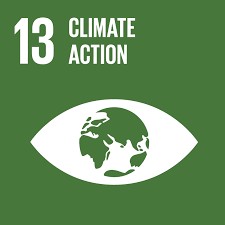
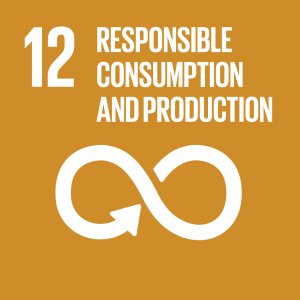
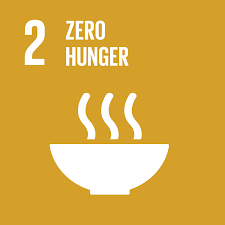
Smart Trash Cans | Bringing Tech to the Kitchen
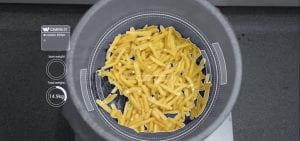 In our search for solutions that can solve the food waste problem, we found a technology that is now used in commercial kitchens, and happens to come from a fellow INSEADer! Winnow developed an AI-based technology for commercial kitchens that analyzes trash weight data and photos using computer vision and other machine learning techniques to determine what was thrown into the bin, the cost associated with that waste, and provide insights to improve future food sourcing. According to Winnow, kitchens that adopt Winnow can reduce food waste by upwards of 50% and their total food cost (not food waste cost) by 3-8%, with a 2-10X ROI on their Winnow investment. However, we have never seen a high-tech trash can in our houses. We saw a clear gap in the market for using technology to reduce wastage at the household level.
In our search for solutions that can solve the food waste problem, we found a technology that is now used in commercial kitchens, and happens to come from a fellow INSEADer! Winnow developed an AI-based technology for commercial kitchens that analyzes trash weight data and photos using computer vision and other machine learning techniques to determine what was thrown into the bin, the cost associated with that waste, and provide insights to improve future food sourcing. According to Winnow, kitchens that adopt Winnow can reduce food waste by upwards of 50% and their total food cost (not food waste cost) by 3-8%, with a 2-10X ROI on their Winnow investment. However, we have never seen a high-tech trash can in our houses. We saw a clear gap in the market for using technology to reduce wastage at the household level.
The most high-tech trash cans we have at home are those that change food waste into fertilizers. We thought that this function also helps to face the food challenge.
If we can bring Smart Trash Cans (ST) that have Winnow technology and a composting function to households, that would represent great progress towards tackling food waste at the consumer level. However, is it feasible given the challenges with cost of technology, barriers to consumer behavior change, and the partnerships involved? That’s what we set out to explore.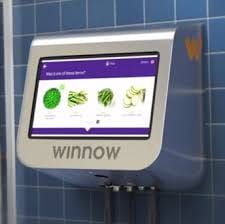
Responsible Kitchens Project (RKP) Value Proposition and Objectives
To effectively place smart trash cans in households and begin reducing food waste, we started with the issue of the trash can itself. Rather than requiring a project participant to purchase the trash can (which represents the first major barrier to adoption), we determined the technology should be lent to consumers upfront and financed via customer retention and a potential grocery savings reinvestment. The value proposition of our project can be summarized as “Provide food waste reduction technology to consumers in a cost-less manner.” By using technology, households will save cash, reduce waste and emissions, and be educated to not overspend.
Our goal is to reduce household food waste. We will aim to reduce 25% of the food waste of 1 million households in 5 years. From a sales goal perspective, this would require bringing 1 million STs to the residential market. The progress towards the sustainability goal can be measured by the Winnow technology itself. As the project progresses, we also aspire to define new consumption indicators (natural resources, non-renewable fuels, effective consumption) per tonne of food. Based on data from initial pilot projects such as YoY decrease in food wastage by weight and dollar amount per household, incremental food waste recycled into fertilizers and dollar value impact of this change will help us define our additional metrics and KPIs. Within the UN SDG 12 (Responsible Consumption and Production), the main UN SDG Indicator the project will contribute to is 12.3.1 (b) Food Waste Indicator.
The RKP Business Model

The business model of this project relies on a collaboration between Winnow and grocery delivery service (GD), Winnow sells a miniaturized, more cost-effective version of their commercial ST to GD, GD lends ST to customers for free and:
- Increase GD’s customer retention by leveraging their purchasing data to provide information and suggestions based on the customer’s purchase history and waste data
- GD to collect the compost made in each ST and sell it to farmers and close the loop of circular economy
The key points here are that ST is used as a customer retention tool, customers are more likely to adopt the technology because they aren’t directly paying for it, and the existing distribution network of GD is utilized for distributing ST and collecting composted material. Us, the project coordinator, would receive fees from Winnow, GD, or both based upon adoption and success of the program. The more food saved, the more all involved benefit.
Consumers will primarily benefit from the output of the AI analysis of food waste – recommendations to reduce future waste, which is better for their wallets and their conscience. The GD will also benefit from customer data. Combining the consumer’s purchase and waste data, GD will analyze the consumption pattern of the consumer. Based on the analysis, it will recommend recipes and grocery lists that enable less food waste. Additionally, by comparing the purchase and waste data, GD can inform customers of food that is close to expiration so they use and can prepare to restock.
To ensure maximum impact and customer engagement, gamification will be used to incentivize users. Consumers will be able to see their food waste trends through an app, where they can monitor their efficiency (Responsible Kitchen index score) compared with other consumers. Performance figures will have an anchoring effect. For example, if your food waste was 15kg in the previous month, that will become the psychological upper bound for this months’ waste. If a consumer wasting 20kg per month finds out that the average of similar households is 15kg, the consumer will be motivated to reduce the waste. To further incentivize consumers to waste less, GD will provide discounts based on individual and comparative performance, which shall incentivize consumers to waste less (e.g. 5% discount if you reduced waste 3 months in a row).
Once food is in the trash can, the goal is to leverage composting technology to close the loop. ST will turn the waste into compost – to be collected by the GD when delivering new groceries, and sold back to food suppliers. This is a secondary source of income for the GD, and further incentive to participate.
The ‘Foodback’ Loop
Under this project, less food waste leads to more profit for all parties involved.
For the GD: Less food waste is connected to fewer food expenses, which leads to happier, more consistent customers and an ability to target those customers with better marketing and advertising for higher margin food purchases. Furthermore, new customers can come to GD hearing about how the program is helping to reduce food costs. These network effects result in a broader customer base and higher revenues.
For Winnow: The more the GDs are able to expand the program, the larger and more consistent the household line of Winnow products become. Because they are selling to the GD rather than the end consumer, sales are more predictable and there is little marketing effort involved on their end.
For the consumer: Consumers reduce food waste and food costs by following the recommendations from the Winnow analysis and GD. Overtime, accuracy improves and the positive resulting experience reinforces the value to the customer of leveraging the program.
For the food ecosystem: Over time, the power of data makes for more informed consumers, more knowledgeable GD services, and a more nimble and less wasteful food supply chain, that feeds itself through the compost recycling of any remaining waste. This positive reinforcement loop strengthens as the partnerships are cemented and network effects increase the number of consumers involved in the Responsible Kitchens project.
Stakeholders, Incentives and Related Risks
The main information risk the project faces is the inventory risk of ST. GD/Winnow should be able to ship ST as soon as consumers request to join the project or ask for repair. One way to tackle this issue is to introduce modularity in ST’s design and engineering. Using common parts with the Winnow trash cans for commercial kitchens and postponing differentiation will not only make the product closer to build-to-order but also pool the demand of common parts, reducing their demand variability. Information risk can also be mitigated on the demand side by surveying consumers ahead of time to understand most likely adopters and giving them a sense of the savings to be had through project participation.
The key stakeholders involved are the end consumers or households, who would be using the STs and the GDs which are acting as the interface in the business model, connecting the business with the end consumers.
To make each of the stakeholders motivated, the business model offers various incentives to each party. The involvement and interaction of end consumers or households are enhanced by gamification, through which the end consumer can track on the application the food waste generation trend, efficiency of food purchase and consumption as compared to other friends or connections on the application and with the average consumer base in the region. Ranks will be assigned to consumers based on efficiency and improvement in the reduction of waste generated. Based on the improved performance of consumers, exclusive promotions and discount coupons will be offered to the consumers, motivating them to participate more.
For the GDs, incentives are tied to more revenue and optimized processes. The use of ST and ordering through the application will help generate customer loyalty and consistent orders for the GDs. Further, with all the data stored on the system, the stores can use the data for better demand forecast, hence reducing the waste from the stores as well. Finally, the stores would have the opportunity to earn additional revenue from the sale of the fertilizers made from food waste.
However, there still are incentive risks that can come up. One conflict of interest is between GD and Winnow. If their relationship is based on a simple procurement contract, GD has the incentive to purchase less to avoid carrying too much inventory. A buyback contract will be one mitigation to increase the purchase volume. A revenue-sharing contract or joint venture establishment will align the incentive of the two parties further.
Feasibility Challenges and Risks
There are possible challenges that can arise, affecting the business model and the eventual goal. Below are a few challenges and risks that exist:
- End customers use different grocery delivery stores, aside from the ones in the application, affecting the accuracy of the data generated and hence the suggestions offered
- STs are smart devices, thus might need frequent maintenance or troubleshooting. Higher frequency of such maintenance or troubleshooting of ST may lead to higher operating cost
- Regional and cultural differences in diet and food habits require different configurations and settings in the application. Hence, research needs to be put in to identify the consumption habits in each region and culture so that the data processing and the suggestions can be optimized
- Post the recycling of food waste, the fertilizers are generated. However, depending on the waste, there may be variation in fertilizer quality. Hence, there might be a challenge to maintain consistency of the fertilizer quality
- Finally, despite the incentives offered, there is a challenge to ensuring the continued engagement of customers. There might be a few instances where customers just start using STs as regular trash cans
5-Year Outlook | Is RKP Achievable?
Understanding the risks and difficulties mentioned before, we still believe our goal to reduce 25% of the food waste of 1 million households in 5 years is bold, but achievable.
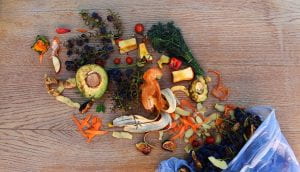 According to Foodprint, 4-10% of food is wasted at restaurants (in weight). Winnow is achieving a 2-8% food cost reduction. Although the weight and dollars need to be adjusted, it can be roughly assumed that more than half of the food waste is reduced. The situation in houses is likely to be different from commercial kitchens, but 25% should be achievable if consumers comply with recommendations. One million households is an aggressive, but necessary scale for this project, given the size of the food waste challenge.
According to Foodprint, 4-10% of food is wasted at restaurants (in weight). Winnow is achieving a 2-8% food cost reduction. Although the weight and dollars need to be adjusted, it can be roughly assumed that more than half of the food waste is reduced. The situation in houses is likely to be different from commercial kitchens, but 25% should be achievable if consumers comply with recommendations. One million households is an aggressive, but necessary scale for this project, given the size of the food waste challenge.
Further, providing STs for free up front to consumers will accelerate the diffusion. Also, the key technologies (Winnow technology / camera and composting) and the main distribution network already exist, which shall contribute to achieving the goal.
However, since more customers lead to more transportation, if the existing distribution network is not efficient and eco-friendly enough, more customers could risk leading to more carbon emissions. Therefore, the environmental impact of the distribution should be closely monitored so the project results in more good than harm.
The Path Forward | Establishing a Pilot
In order to move the Responsible Kitchens project forward, it is necessary to determine:
- If the Winnow technology can be miniaturized and produced more cheaply, at scale for household customers
- If the solution is viable from a customer engagement standpoint among heavy grocery shoppers
- If the grocery store chains and delivery services are amenable to the project
- If the program can be scaled cheaply and effectively
To get started and test these issues, it would be useful to conduct a pilot program to determine the viability of the entire model before investing heavily in technology changes or partnerships. This could be done in multiple stages – first cheaply to under
stand the scope of household food waste and the potential cost savings, and second, to test customer engagement.
First, we would put together a pilot group of household shoppers of different sizes and makeups (to be representative of the broader target market) and equip them with a scale and a minimum viable product (MVP) phone app through which they would record their grocery purchases, take pictures of their kitchen trash, and record the weight readings from the scale on a twice-daily basis for 30 days. We could then collect the self-reported metrics and photos and send them to Winnow for computer vision analysis. While the data would not be to the same quality of that collected directly by their system, it should provide a rough idea of the level of food waste on a per capita basis, and the potential cost savings involved with minimizing that waste. If at the end of 30 days there is sufficient evidence to support the fact that current household waste is a large enough issue to provide incentives for households to be smarter shoppers, we would proceed to phase 2 of the trial.
In phase 2, we would extend the partnership with Winnow and fund devices to be sent to a critical mass of households that would be instructed to begin recording their grocery purchases and using the trash can for waste. The goal of this second phase would be to test customer engagement and behavior change as a result of using the technology and receiving recommendations for behavior change. Through the MVP app (in partnership with Winnow) we would provide feedback to the consumers on their waste habits and the potential savings opportunity. If the results bear fruit, we could begin pursuing grocery partners to bring the program to scale. In the meantime, we would want to work with Winnow to adapt the technology for household use. This would require feasibility analysis around miniaturizing the connected scale and camera technology for a household, deploying the AI at scale via the cloud and an app-based tool for consumers to use, and training of the model on images of household waste and grocery brands (as the types of food waste and brands in commercial kitchens are likely quite different).
Barriers to Scaling the Responsible Kitchens Project
Critical to the success of this venture is the partnerships between Winnow and popular grocery chains in the US. Grocery chains and delivery services must be convinced of the benefit to them (more precise customer behavior data, customer retention, and a more targeted platform for customer advertising and marketing efforts) as the model would seemingly result in smaller sales as customers begin reducing their weekly grocery purchases.
Another critical barrier to scale is the technology cost. Improvements in the Winnow technology are required to make it feasible at a household rather than a commercial kitchen level. Therefore, STs will not be cheap in the beginning. Under our business model, the GDs will bear the cost of the Winnow technology, and may be hesitant to scale given the risk and cost implications. One solution would be a joint customer financing model whereby grocery savings in the initial months of program participation are paid back to the GD to finance the trash can. This would allow the customer to stay break-even on their traditional grocery spending until they have paid down the trash can. An alternative could be financing via a revenue sharing agreement between Winnow and the GD in which the GD pays Winnow the ST cost by sharing the additional revenue they earned from higher customer retention. A third option involves us as the project coordinator purchasing and lending the technology to cons
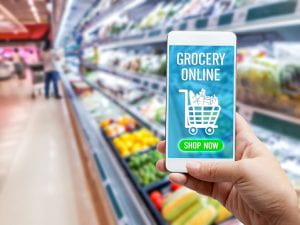
umers upfront in exchange for a revenue sharing agreement with the GDs.
The Path Forward | Next Steps
To get the Responsible Kitchens program in motion, our first step is to begin partnership discussions with Winnow, and begin discussing the feasibility of our proposal before launching into the aforementioned pilot program. Given the upfront investment in technology changes as well as the need to finance the ST costs until enough additional revenue, we also anticipate needing to raise funds from impact investors and investors with an interest in the circular economy and driving customer behavior change.
Behavior change is challenging and food waste is a systemic, wicked problem, but with carefully cultivated partnerships and the appropriate incentives in place, the Responsible Kitchens project can begin chipping away at wasteful habits one household at a time.
References
https://sustainabledevelopment.un.org/?menu=1300